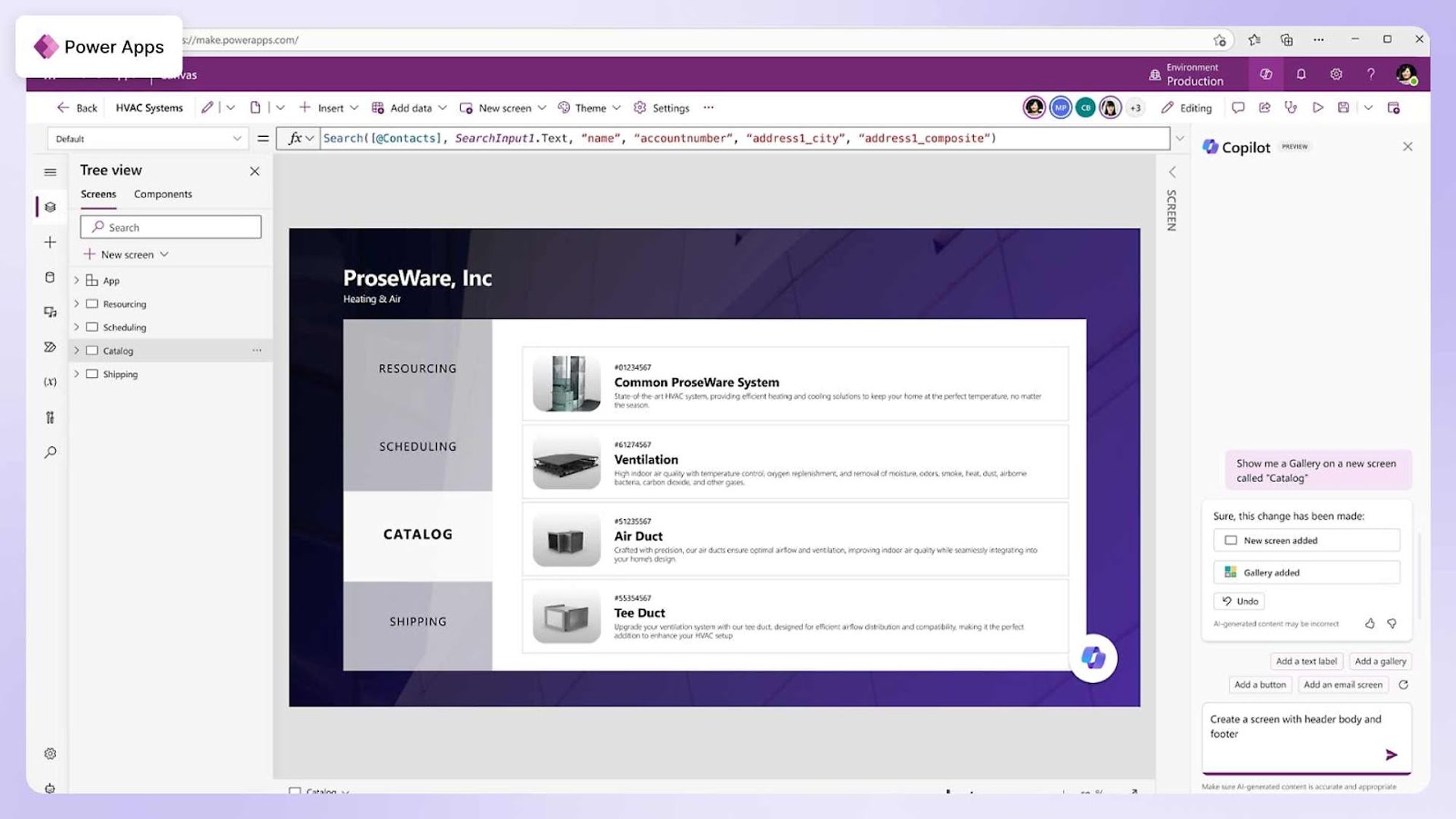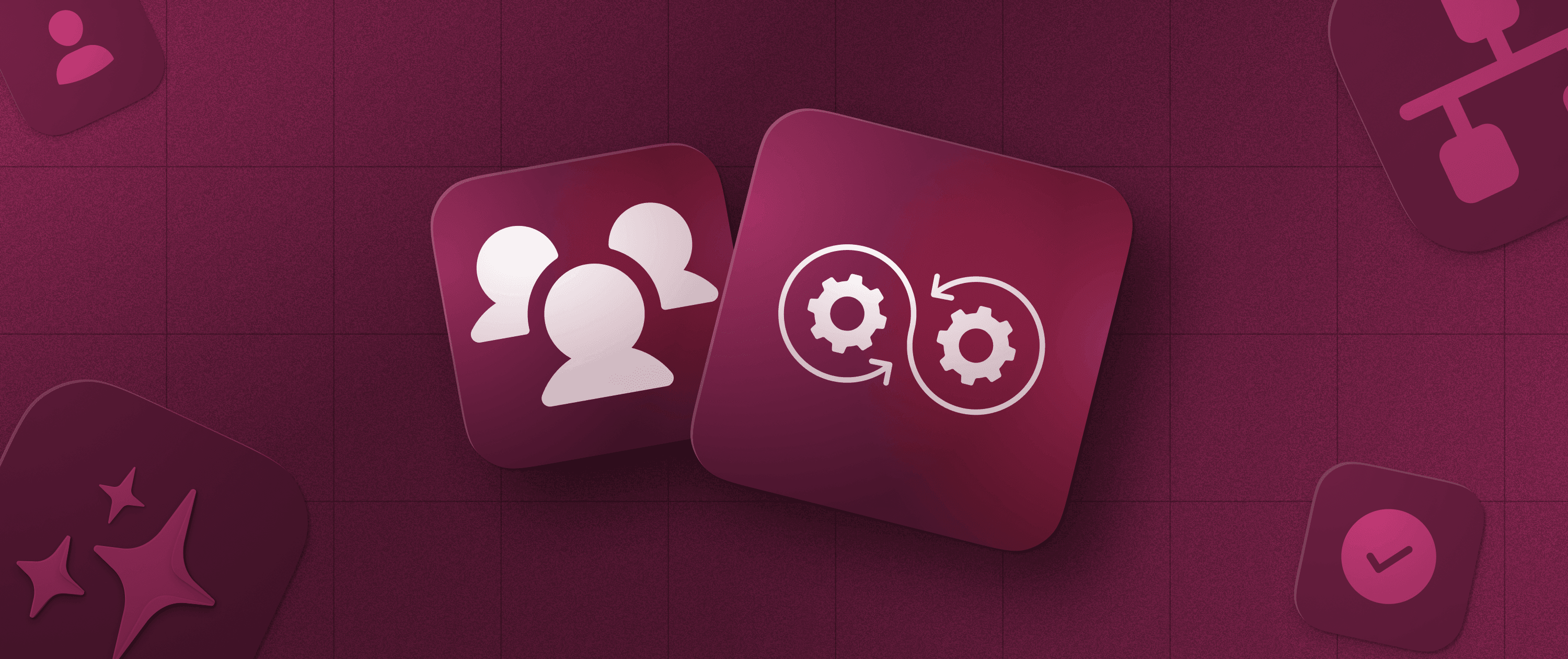Outsystems vs PowerApps: The Critical Differences


No-code and low-code development methods are helping companies create custom business apps, making their processes more efficient, boosting productivity, and giving them a real edge in the market. Studies show that these platforms can slash development time to just a tenth of traditional methods, making them invaluable for rapid innovation.
And, when it comes to low-code platforms, there are two names you just can’t miss. OutSystems and Power Apps are dominant forces in this industry, each offering distinct features and benefits, making you question — which platform should you choose.
This article will pit these platforms, comparing them across key parameters - from pricing and scalability to real-world user experience and functionality. Let's dive in and explore how OutSystems and Power Apps stack up.
About OutSystems

OutSystems is a powerhouse in the low-code market, tailored for enterprises seeking to build complex, business-critical applications. This full-stack platform covers the entire development lifecycle, from initial design to deployment and maintenance.
With a client roster including industry giants like Toyota, CGI, and WesternUnion, OutSystems has proven its mettle in accelerating development processes and modernizing digital infrastructures across various sectors.
What sets OutSystems apart is its focus on professional developers and citizen developers alike, offering an intuitive IDE, automated SDLC, and AI-assisted development. It's designed to handle sophisticated web and mobile applications, making it a go-to choice for organizations that want to create enterprise-grade applications rapidly.
Let’s take a look at its key features and pros and cons (based on user reviews on portals like G2).
Key features of OutSystems
Visual Development Environment
OutSystems offers a visual development environment that comes with a drag-and-drop interface speeding up development speed and reducing the learning curve for citizen developers. Its intuitive interface enables business professionals and developers to build custom apps without extensive coding knowledge.
Single-click Deployment
OutSystems allows for one-click deployment of applications across platforms using automated scriptless deployment, eliminating the need to create and maintain multiple scripts for the same application.
Robust Integration Capabilities
Seamlessly integrate with a wide range of systems, databases, and APIs. OutSystems’ extensive library of connectors facilitates smooth data connectivity, enabling organizations to leverage existing resources and build highly integrated applications.
Full-Stack Development
Unlike other popular low-code platforms, OutSystems supports full-stack development. It offers both frontend and backend capabilities, allowing developers to build rich user interfaces while also customizing complex business logic and database operations.
Advanced Security Features
Placing a strong emphasis on security, OutSystems boasts robust security features and compliance with industry standards, ensuring the protection of your sensitive data. Additionally, it offers granular control over user access and data governance, bolstering overall application security.
Agile Development Methodologies
Incorporating built-in DevOps capabilities, OutSystems enables teams to adopt agile development methodologies. Its collaborative environment facilitates seamless collaboration between developers, testers, and stakeholders, promoting faster iterations and shorter release cycles.
Extensive Pre-built Templates and Components
Boasting an extensive library of pre-built templates and components, OutSystems accelerates development giving you a head start and allowing your developers to focus on customizing the application to meet specific requirements instead of building apps from scratch.
Scalability and Enterprise-Grade Architecture
Designed to handle large-scale enterprise applications, OutSystems’ architecture supports scalability, ensuring that applications can grow and adapt to increasing user demands without compromising performance.
OutSystems offers an extensive feature list, which sets it apart from other low-code platforms. However, it is important to note that these comprehensive offerings come with a high price tag. If you are interested in exploring cost-effective alternative low-code platforms that address the limitations of OutSystems, take a look at our article on OutSystems’ competitors.
Pros of OutSystems
The platform’s modern UI/UX templates and intuitive UI that allow users to customize them made development significantly faster for users.
OutSystems' strong integration features enable developers to link their apps to databases, systems, and APIs that already exist.
Cons of OutSystems
Some users raised concerns about high licensing costs and additional expenses for platform maintenance, support, and training.
Organizations using OutSystems risk vendor lock-in due to their reliance on the platform.
Say goodbye to vendor lock-in
Avoid vendor lock-in and maintain full control over your applications. Enjoy the freedom of open-source development.
About Power Apps

Microsoft Power Apps is a low-code development platform developed by Microsoft that’s designed to democratize app development. It empowers both citizen developers and IT professionals to rapidly create custom applications with minimal coding. Power Apps seamlessly integrates with Microsoft's suite of tools, including Office 365, Dynamics 365, and Azure, offering a cohesive app development experience.
With its AI-powered Copilot feature and over 200 data connectors, Power Apps facilitates easy integration with Microsoft products and third-party platforms. This versatility allows business users to modernize legacy systems, automate processes, and build enterprise-grade applications across various departments.
Recognized by industry analysts Forrester and Gartner, Microsoft Power Apps has been the go-to development platform for major companies like Accenture, Chevron, and PayPal. Its strength lies in its ability to create powerful, tailored solutions while maintaining deep ties to the Microsoft environment, making it an attractive choice for organizations heavily invested in Microsoft technologies.
Let’s explore the key features, pros, and cons of Microsoft Power Apps.
Key features of Power Apps
Integration with Microsoft 365 and Azure Services
Since it’s a Microsoft product, Power Apps easily integrates with Microsoft 365, Azure services, and other solutions of the Microsoft ecosystem, allowing teams to work together more efficiently. It allows organizations to tap into existing data and Microsoft services, making it an attractive choice for businesses deeply entrenched in the Microsoft technology stack.
Wide Range of Connectors and Data Sources
Microsoft Power Apps hosts an extensive library of connectors and data sources, including the Microsoft Common Data Service (CDS). These connectors enable smooth integration with popular systems, databases, and APIs, ensuring a robust foundation for application development.
Mobile App Development
With responsive design options and native mobile functionality, Microsoft Power Apps provides impressive capabilities for building mobile applications. Developers can create cross-platform mobile apps that cater to various devices and operating systems.
Customizable AI Builder
Power Apps incorporates AI Builder, which allows developers to incorporate artificial intelligence capabilities into their applications. From optical character recognition (OCR) to sentiment analysis, this feature enables organizations to enhance their applications with intelligent functionalities.
Extensive Library of Pre-built Templates and Components
Similar to OutSystems, Power Apps offers a wide array of pre-built templates and components. These resources enable citizen developers to quickly prototype and build applications, accelerating the development process.
Integration with Power Automate
Power Apps integrates with Power Automate (formerly Microsoft Flow), enabling workflow automation within applications. This functionality empowers organizations to automate repetitive tasks and improve overall productivity.
If you are considering alternatives to Power Apps, check out our detailed article on the best Power Apps alternatives. We have listed platforms that offer similar capabilities but better suit your specific requirements, including affordability, ease of use, and integration options.
Pros of Power Apps
Users pointed out that the drag-and-drop functionality, along with the pre-built templates, enables a rapid development process.
The platform’s integration into the Microsoft ecosystem helps users to make the most of existing data and resources.
Cons of Power Apps
Some users raised concerns over the pricing structure, which can get confusing and shoot up significantly as the complexity and usage of the apps increase.
Users have noticed that as the app becomes more complex or has to handle large datasets, the performance deteriorates.
Which one is best suitable for your business?
OutSystems (Priced at $36,300 per year) | Power Apps (Starts at $20 per month per user) | Appsmith (Start at $0.4 per hour) |
Mid-sized businesses Enterprise | Small businesses Mid-sized businesses Enterprise | Startups Small businesses Mid-sized businesses Enterprise |
At a glance (ratings based on G2 reviews)
To provide a quick comparison, we've gathered ratings from G2 reviews for PowerApps vs OutSystems. In addition to stacking these platforms across key metrics such as overall rating, ease of use, and quality of support, we have also added Appsmith to the mix to give you a clearer picture of how these platforms fare against each other and which one should you opt for.
Feature | OutSystems | Power Apps | Appsmith |
Number of Reviews | 1,023 | 185 | 43 |
Overall Rating | 4.6/5 | 4.2/5 | 4.7/5 |
Quality of Support | 8.6/10 | 8.1/10 | 9.3/10 |
Meets Requirement | 8.9/10 | 8.3/10 | 8.4/10 |
Ease of Setup | 8.9/10 | 8.5/10 | 9.1/10 |
Ease of Admin | 8.5/10 | 8.3/10 | 8.6/10 |
Ease of Use | 9.2/10 | 8.2/10 | 8.9/10 |
Product Direction | 9.3/10 | 9.1/10 | 10/10 |
Quick Comparison: OutSystems vs Power Apps
While G2 ratings and metrics can help shape an opinion of low-code platforms, they might not give you the full picture.
Hence, to make up for that difference, we have compared the features and functionalities of OutSystems and Microsoft Power Apps to help you establish a solid understanding of what each platform offers and which one best meets your business needs.
Highlights | OutSystems | Power Apps | Appsmith |
Platform type | Low-code | Low-code | Open-source, low-code |
Deployment options | Cloud, on-premises, Hybrid | Cloud-based | Cloud, self-hosted, on-premises |
Mobile app support | Yes, supports hybrid and native apps | Yes, supports hybrid and native apps | Limited, supports hybrid apps only. |
Ease of use | Visual development interface | Intuitive drag-and-drop interface | Drag-and-drop interface with code editor and intent-based auto layouts |
Community and support | Active community, strong customer support | Large Microsoft ecosystem support | Growing community with extensive documentation |
Scalability | Designed for large-scale enterprise apps | Suitable for small to medium-sized apps | Scalable deployment options |
Learning curve | Steeper learning curve | User-friendly for the Microsoft ecosystem | Low, comprehensive documentation and community support are available |
Customization | Full-stack customization, code-level | Limited customization | Extensive customization with built-in JS editor |
Security | Robust security features, compliance | Microsoft security standards | Secure, with customizable security policies |
Updates and releases | Frequent updates and improvements | Regular updates and feature releases | Open-source, community-driven updates |
Best for | Enterprises with complex development needs | Citizen developers in the Microsoft ecosystem | Organizations seeking flexibility and open-source |
Pricing | OutSystems Personal Edition: Freemium plan with limited features OutSystems Developer Cloud: Starts at $36,300 per year (Priced per application, per user, and advanced add-ons) | Power Apps Developer Plan: Freemium plan with limited features Power Apps Premium: $20 per user, per month Power Apps Premium (with a 2,000-seat minimum): Starts at $12 per user, per month | Appsmith Free Plan: Free community edition with core functionalities Appsmith Business Plan: Starts at $40 per month (for 100 hours of usage). Additional usage is charged at $0.40 per hour Appsmith Enterprise Plan: Custom pricing. Contact sales for more details. |
Simplify App Development with Appsmith
With 18+ native integrations and 45+ customizable widgets, Appsmith simplifies app development. Use Appsmith to build complex applications with minimal coding and maximum impact.
Critical Differences: OutSystems vs Power Apps
While both OutSystems and Power Apps are excellent low-code solutions that allow users to develop complex applications, eliminating the barriers of technical expertise, they cater to different audiences and have distinct strengths. Here’s an insight into the critical differences between these two platforms.
1. Target Audience and Use Cases
Boasting enterprise-grade scalability and a comprehensive feature list, OutSystems is designed for enterprises and organizations with complex development needs. It excels in building scalable, custom OutSystems applications with intricate integrations. Power Apps, on the other hand, focuses on citizen developers and internal productivity apps within the Microsoft ecosystem.
2. Development Approach and Flexibility
OutSystems provides a code-level customization approach, offering greater flexibility for complex development scenarios. In contrast, Power Apps focuses on rapid application development with its visual development environment and low-code approach, limiting customization options at your disposal.
3. Integration Capabilities
When it comes to integration capabilities, OutSystems comes out on top if you are looking for extensive integration options with third-party systems, databases, and APIs which makes it suitable for organizations with diverse integration needs.
Since it’s a product of the Microsoft ecosystem, Power Apps shines in its tight integration with Microsoft services but offers limited options for non-Microsoft platforms, making it a suitable platform for businesses already vested in the Microsoft ecosystem.
4. Security and Compliance
OutSystems places a strong emphasis on security, compliance, and data governance. It offers robust security features and ensures adherence to industry standards.
Power Apps, while compliant with Microsoft security standards and governance policies, may not provide the same level of granularity and customization.
5. Scalability and Performance
Designed to handle large-scale enterprise applications, OutSystems offers an architecture that ensures scalability and high performance. In contrast, Power Apps is better suited for small to medium-sized applications and may face challenges when it comes to customization, scalability, and performance for enterprise-grade applications.
6. Learning Curve and Support
Due to its comprehensive nature and arsenal of features, OutSystems comes with a steeper learning curve for development teams. However, it provides comprehensive documentation and professional support.
Power Apps, with its user-friendly interface and integration within the Microsoft ecosystem, offers a gentler learning curve and benefits from a community-driven support system.
If you still find OutSystems and Power Apps lacking in features, functionality, or pricing models, you should check out our comparison of these leading low-code solutions that you must have come across—Retool vs Bubble
Which One is Better: Outsystems vs Power Apps
Picking the right low-code platform can be a pretty tough decision to make since it’s going to form the foundation of your app development processes. Moreover, with platforms like OutSystems and Power Apps, there’s also the risk of vendor lock-in, making it imperative that you get a thorough understanding of their core capabilities, perform proper research, opt-in for a free trial which both platforms offer, and only then make your decision.
You must have understood by now how OutSystems and Power Apps are built for different audiences and use cases. Basically, if you require extensive customization, and enterprise-grade scalability, and can foot their steep licensing costs, you should consider going for OutSystems. On the other hand, if you are already vested in the Microsoft ecosystem and are looking for rapid application development software, Power Apps would be a better fit for you.
However, if you are seeking a flexible and robust low-code development platform, with no risks of vendor lock-ins and a cost-effective pricing model, Appsmith stands out as an alternative worth considering.
With its open-source framework, powerful integration capabilities, comprehensive UI-building framework, and scalability options, Appsmith provides a compelling choice for organizations looking to accelerate application development and achieve their unique business objectives.
Appsmith: An alternative you should consider
Here’s a detailed insight into why Appsmith is an alternative you should consider:
An open-source framework for building custom UIs and integrating with diverse data sources.
Features such as air-gapped and custom JS libraries that you’ll find are lacking in most of the other alternatives.
Usage-based pricing makes Appsmith a lucrative pick in comparison to other available options as it ensures you pay for exactly how much you are going to use.
Native integration with popular databases, APIs, and services, not to mention the ability to embed Public Apps, providing flexibility in data connectivity.
Advanced customization options with its in-built JS editor and React components, allow developers to create tailored solutions.
Seamless collaboration and Git-based version control for development teams, enabling efficient teamwork and iterative development.
Diverse, scalable deployment options, whether on-premises or in the cloud, ensure flexibility and adaptability to organizational requirements.
Develop Internal Tools 10x Faster
From support portals to sales dashboards, build any internal tool you need with speed and efficiency using Appsmith.
Frequently asked questions about OutSystems vs Power Apps
How does Appsmith fare in comparison to OutSystems and Power Apps?
Appsmith offers a compelling alternative with its open-source framework, powerful integration capabilities, comprehensive UI-building framework, and scalability options. With its usage-based pricing and developer-first approach, Appsmith is best suited for organizations looking to accelerate application development and achieve their unique business objectives without breaking the bank.
What features of Appsmith make it stand out in comparison to OutSystems and Power Apps?
Appsmith provides a user-friendly interface, extensive customization options, and seamless integration with third-party systems. It supports rapid development and deployment, making it ideal for both IT professionals and non-IT users. To top it off, Appsmith offers all of this without any risks of vendor lock-in (since it's an open-source platform) and at a fraction of the costs.
Which among OutSystems and Power Apps offers the best value for money?
While OutSystems and Power Apps both have a long list of excellent features, users can’t access them in the freemium versions. Moreover, their enterprise plans and licensing costs can cost you thousands of dollars a month.
When it comes to offering value for money, Appsmith stands out with its comprehensive features, flexibility, and usage-based pricing model, making it a valuable alternative for businesses seeking low-code development platforms.
Try Appsmith Business free for 15 days
All new Business instances, whether upgrading from a Community self-hosted instance or signing up for the first time, get a 15-day free trial.
Related Blog Posts


